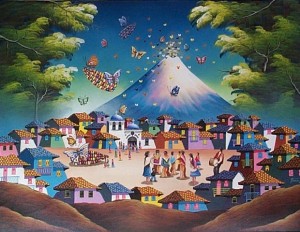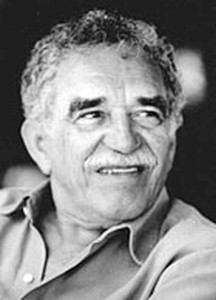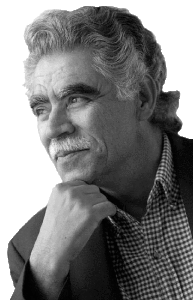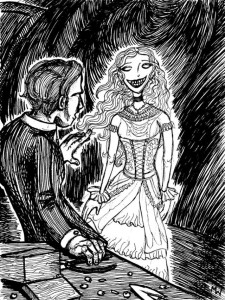The third and final installment of my narrative.
For the first part click here.
For the second click here.
****************
December 24, 2012
I signed it.
I hate that I had to sign it. I keep staring at the screen—blank, as if just a few seconds ago it didn’t read out: Your leave of absence notice has been submitted. Thank you for your time. Followed by some other logistics as to what will happen after it has been processed and recorded.
It’s the logical choice. It’s done to buy more time: more time to save, more time to prepare. So then why can’t I stop the hands twisting at my heart?
I failed. My goal was to make it into school which I succeeded at but what was the point if I could not stay in? All that work was for nothing I guess. My parents say it’s not my fault, Alex says I just aimed too high. Allan is the only one that just looks at me and then gives me a pat on the back.
I think it’s supposed to be comfort.
February 5, 2013
Never thought I’d say this, but I hate school. No, not school because LMU was the best place I could have been. I hate the JC that I’m at. Maybe it’s because I have already experienced the fast-paced, never gonna stop, always stressin’ but we’re loving it pace of the four year university that this mellow, we’ll leave when we leave, I already have “too much” on my plate atmosphere suffocates me. It literally penetrates me with this knife of anxiety, as if I can’t stop fidgeting because all I want to do is move. Be involved, be pulled in twenty different, and overly stressed.
That’s what I want. What I need. In one semester it became a heroin that I apparently need injected in me every semester lest I want to go insane.
But there’s nothing to do here. I went to the club fair, and there were so few clubs available. It’s not what I’m used to.
I just really want this semester to end.
I want to be back at the school on a bluff. With a chapel that you can see once you walk down the walk of Alumni Mall. The school that’s small but does not fail to take you on an adventure with the right people. The school that is so expensive that I cry and wish for the price to go down so that it can be made easier for me to attend.
The school that I want to desperately call mine.
April 18, 2013
It still looks the same.
I don’t know what I was expecting. Maybe for some sort of drastic change? But I think that’s my egotistical mind counting my absence as the central part of this university, when really it’s a small change.
I all but run to Student Accounts. I really don’t want to be seen by anybody. I didn’t tell anyone that I would be coming back for a few hours before I have to (forcefully) return to the real world. It shouldn’t have to be that way. I should be excited to see my friends—the friends that I already have so many memories with despite being gone for almost the entire semester. But every time I think about it, its unfathomable.
If they are going to see me, it’s going to be as a student, not this leave of absencee.
May 2, 2013
10:00 AM
I wonder if I would’ve been thrown into the fountain this morning. I was actually looking forward to it. It seemed so much fun when we did it to Lexie and Sarina. Sure, it sucked that they were being thrown into a shallow fountain filled with ice water but they got cake! And presents, sometimes a crown, and a sash. Because it was their days.
I didn’t want the crown or the sash. I wanted the chase. Pretending to run slow so they could catch me and force me over to the edge before letting me plunge into the freezing depths. Those would’ve been loud laughs and screams echoing throughout the quiet, finals-stressed campus.
11:00 PM
They did it! They decided to join SLG! I’m so happy for them! Even if I can feel my smile twitching, cheeks hurting trying to stay completely genuine. I wonder what it would’ve been if I was with them.
To wear those letters…that would have been a great birthday present.
March 5, 2013
¿Por qué no me oyes?
Don’t you hear the words I say? Don’t
you see my fingers itching for something more to grasp other than a pencil and pen?
¿No oyes la lagrima—desesperación en mi voz? The way I just want to run and run
far and come back when I want. When I want. Not have to, want. Óyeme, por favor.
I thought you would always listen, always support me. so why not now? When
I need it most. Usa este tiempo. Es tiempo de relajo. Tiempo de paz. Entiéndeme,
Mija. No te quieres ir tan lejos. No repites un error de familia. Family mistakes
are not mine. I want to fall over cliffs, only to grab onto branches as I fall,
pull myself up and learn the hard way how to scale the side. Yes, I will crave
for your steady hand—smooth but with hidden calluses from the rocks
that have scratched and marked you, but I can’t have it forever. You won’t
be here forever. Aproveche este tiempo, mija. No quiero que te quedes
con este dolor no ver una madre. But it’s a pain I have to learn eventually,
right? I already know the heartache. The few remaining bodies of fresh
water will become salty. Phone calls and letters will not be enough to substitute
for you. I know how hard it is to build bodies out of words. As do you.
But don’t you see your image etched into my heart? Carried everywhere,
I could never forget. ¿Cómo puedo? ¿Cómo puedo olvidar los abrazos
Que espantaron los fantasmas y las niñas que trataban de matar mi alma?
Los brazos más fuertes que yo he visto en una mujer. Hombros llenos de
paciencia aunque todos te están gritando, tu nunca usas tu voz fuerte.
My heart is not an etch n’ sketch. You cannot be erased. I can feel
you in every pulse, every breath, every step. I have more of Dad,
but I am always trying to be you.










